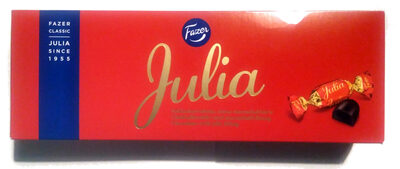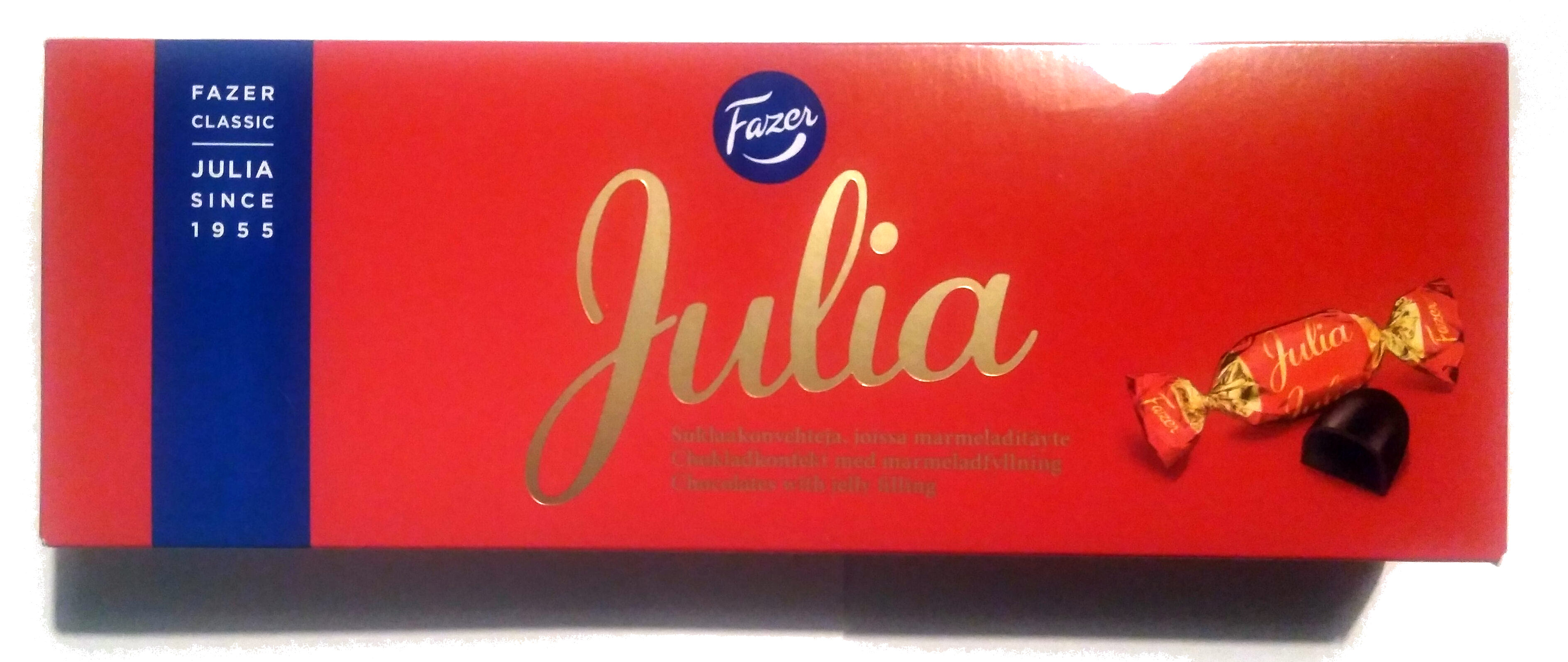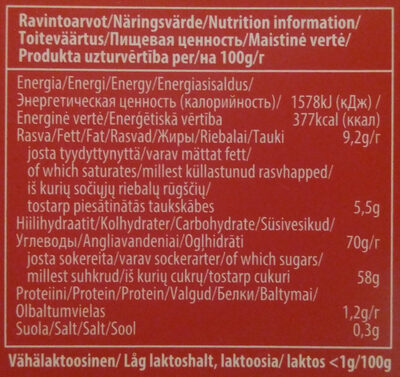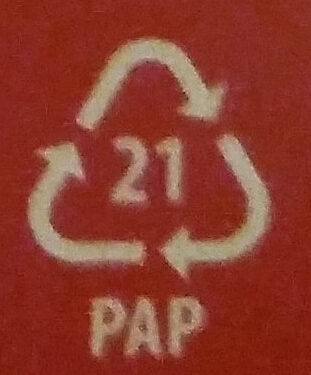Julia - Fazer - 320g
This product page is not complete. You can help to complete it by editing it and adding more data from the photos we have, or by taking more photos using the app for Android or iPhone/iPad. Thank you!
×
Streckkod: 6416453071537 (EAN / EAN-13)
Vanligt namn: Chokladkonfekt med marmeladfyllning (73%)
Kvantitet: 320g
Varumärken: Fazer
Kategorier: Snacks, Söta snacks, en:Cocoa and its products, Konfekt, Chokladgodis, en:Bonbons, en:Milk chocolate candies
Etiketter, certifieringar, utmärkelser: EAC
Länk till produktsidan på producentens officiella webbplats: https://www.fazer.fi/tuotteet-ja-asiakas...
Butiker: K-market
Länder där såld: Finland
Matching with your preferences
Report a problem
Datakällor
Produkt tillagd den av jumati
Senast ändrad produktsida på av packbot.
Produktsida också redigerad av openfoodfacts-contributors.












